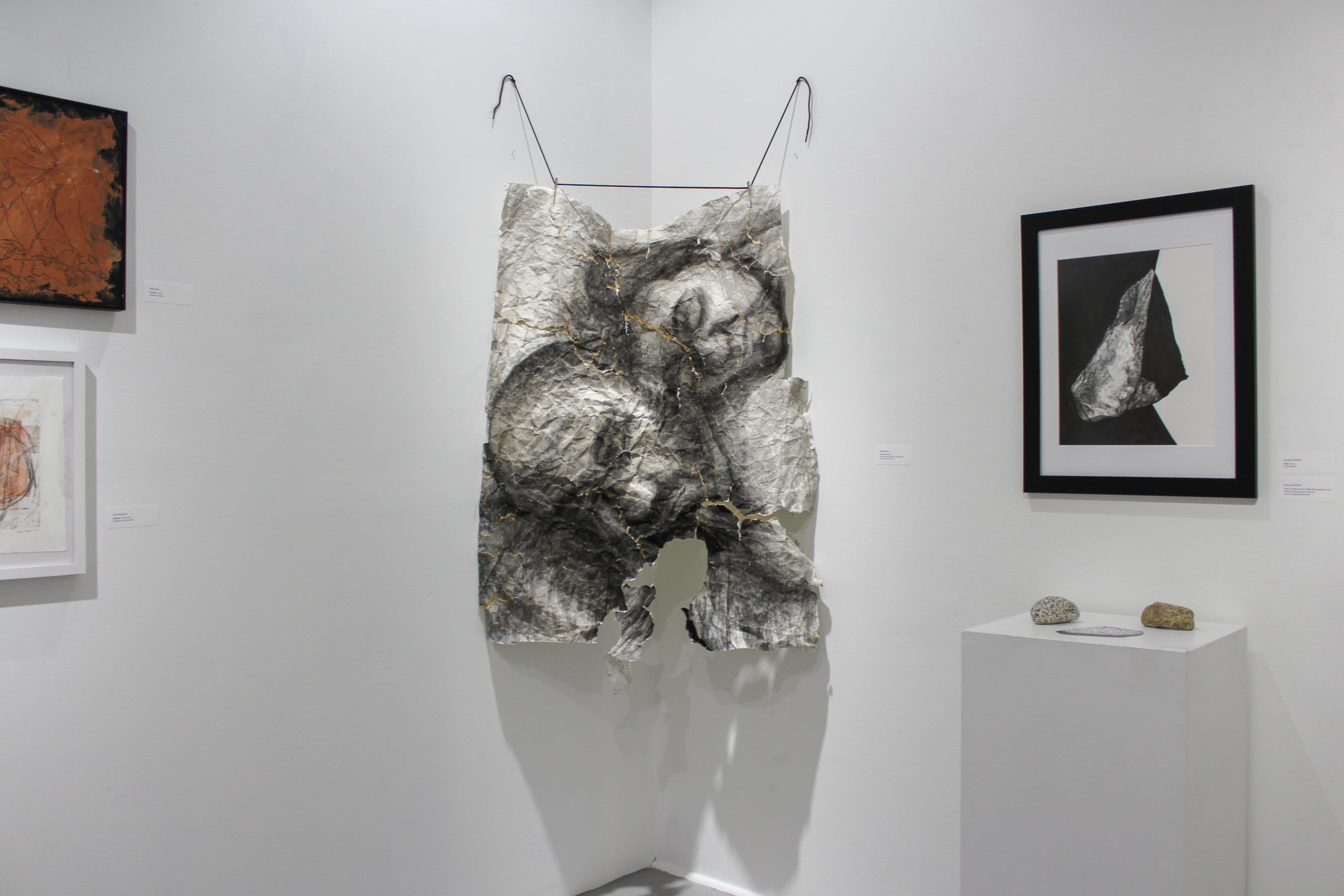
Through Dec. 22, the walls of the Mills Gallery at the Boston Center for the Arts reflect the vibrant emotional landscape of artists. “Field Notes: Lovers, Teachers and the Consciousness in Between,” explores the role that relationships have played in art and society. Curated by educator and artist Chanel Thervil, the show examines the way entanglements with friends, lovers, mentors and others shape an artist’s way of looking at the world.
Thervil is a Haitian American artist and educator with a particular focus on the intersections of art, history and pop culture. Her work has been highlighted at venues around greater Boston, including Urbano Project and the deCordova Sculpture Park and Museum. She uses a James Baldwin quote as a jumping off point for her curation: “The role of the artist is the same as the role of the lover. If I love you, I have to make you conscious of the things you can’t see.” More than 50 artists articulate these themes in individual works, and the gallery also showcases a stunning collective mural made for the exhibition by Kate Holcomb Hale, Soyoung L. Kim and Stephen Hamilton.

The drawing show has been an annual fixture of BCA’s programming since 1979. More than 500 artists and invited curators have been involved since the inception of the exhibition. But don’t be deceived by the categorization of “drawing.” The works in “Field Notes,” though based in drawing, span a wide breadth of media and technique, going far beyond the sketchbook.
“Not Undone” by Molly Kaderka is an ink-on-paper drawing of two figures lying down, resting next to each other. We see only their heads, but it’s plenty to understand the intimacy and safety between them. The drawing has been ripped up, crumpled and then re-stitched together with yellow thread. Like many relationships, it’s not a smooth, linear path but a volatile, challenging and rewarding journey.
Rosie Ranauro’s installation was born of a performance. At the show’s opening night she sat in a chair and asked visitors to draw the back of her head so she could see herself. The drawings, now hung on the wall in front of the chair, illustrate the dramatically different perspectives each visitor had. And ultimately, they only show how others see Ranauro; none of them can tell her how to view herself.
Read my full article in The Bay State Banner.